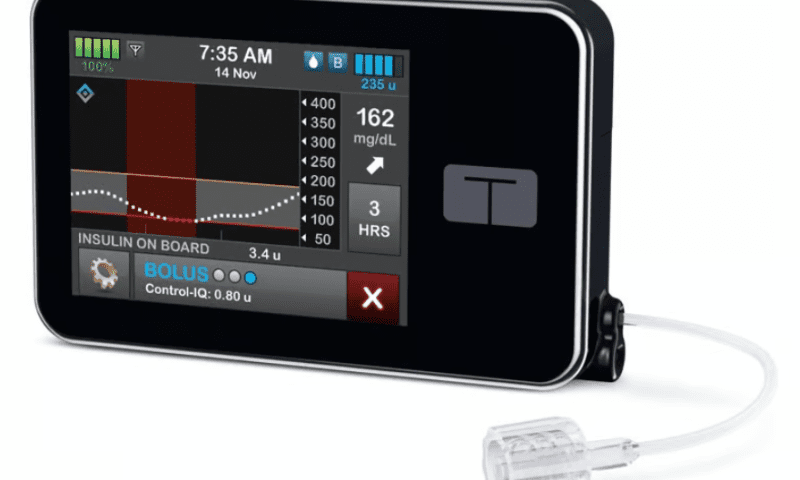Continuous glucose monitors and other connected technologies for diabetes management have traditionally been used overwhelmingly by people with Type 1 diabetes, though major devicemakers like Dexcom and Abbott have recently begun to ramp up their offerings for the Type 2 population, too.
In line with that trend, Tandem Diabetes Care’s automatic insulin-adjusting technology, which had previously been trialed predominantly by Type 1 study participants and is so far only FDA-cleared for that population, was recently put to the test in a study dedicated solely to Type 2 users—and emerged victorious.
The Control-IQ technology continuously takes in blood sugar measurements from a Dexcom CGM, then uses those readings to predict how a user’s glucose levels may change within the next 30 minutes. It automatically corrects for those expected changes, sending updated instructions to a Tandem t:slim X2 insulin pump to prevent both high and low blood sugar spikes. The combination of a CGM, an insulin pump and an algorithm that acts as an automated go-between for the devices is known as a hybrid closed-loop diabetes management system.
The study assigned 30 people with Type 2 diabetes to use the Control-IQ tech for six weeks. It compared those findings to both baseline CGM data and the results of an open-loop period, during which participants had used a CGM and insulin pump, but no connecting algorithm.
Ultimately, Tandem announced Thursday, the Control-IQ-equipped closed-loop system showed improvements across all the study’s endpoints. Not only did it prove to be safe throughout the six-week study period, but it also improved the participants’ time spent in an ideal blood sugar range by an average of 15%, regardless of the methods they’d previously used to manage their insulin delivery.
That 15% improvement shakes out to an additional 3.6 hours spent in range per day, according to Carol Levy, M.D., protocol chair for the study and a professor of medicine at Mount Sinai’s Icahn School of Medicine. She also noted that the participants registered no increase in hypoglycemia events throughout the study.
Type 2 patients who had been using multiple daily injections or an insulin pump fared slightly better, with an average 16% improvement in their time in range while using the Control-IQ tech. Basal-only insulin users, meanwhile, clocked a 13% uptick in their average time in range.
The participants also seemed to take to the closed-loop system easily: They “indicated a high level of satisfaction with the system,” per Tandem, and spent a median of 96% of the study period relying on the closed loop to automatically manage their glucose levels—as opposed to breaking the loop to manually adjust insulin doses.
Those results were achieved even as a majority of the participants used other glycemic therapies, beyond insulin, throughout the study.
“People living with type 2 diabetes often take other medications in combination with their insulin therapy,” Jordan Pinsker, M.D., Tandem’s medical director, said in the company’s announcement. “The combination of safety outcomes and high satisfaction scores seen in this population, who were able to continue these existing medications during the study, shows that Control-IQ technology could be a powerful management solution for their therapy needs.”

